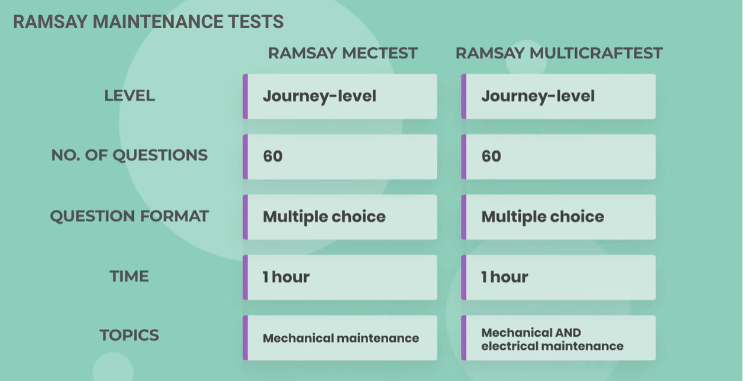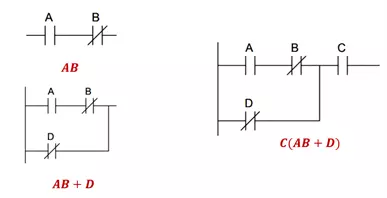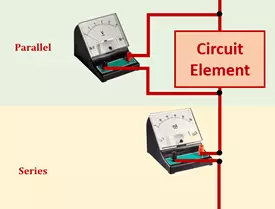Trusted by over 7,587 Candidates
Updated September 8, 2025
The Ramsay Corporation offers a range of mechanical and electrical assessments. On this page, you’ll find free Ramsay practice questions taken from the Ramsay Maintenance Test (commonly known as the Ramsay Multicraft Test), which evaluate the practical mechanical knowledge expected of test takers.
We’ve grouped the questions by test topic, making it easier for you to focus on the sections most relevant to your upcoming assessment.
Practicing with these questions will help you get familiar with the formats and build confidence for test day.
Looking for a more dedicated breakdown of the Ramsay exams? Visit the following pages:
Choose the Ramsay Maintenance Topic You Want to Focus On
Ramsay Mechanical Test Question • Hydraulics and Pneumatics • Print Reading - Mechanical • Power Transmission• Preventive Maintenance • Tool, Materials and Equipment • Troubleshooting • Ramsay Electrical Test Questions • Print Reading - Electrical • AC/DC Theory • Control Circuits • Electronics and PLC • Motors • Test Instruments
Ramsay Practice Test Questions and Answers
Here you'll find 22 Ramsay practice questions (Timed and Untimed) split into Mechanical and Electrical topics, to help you understand the real exam.
When going through this journey-level practice test, do it strategically: work through each section—such as hydraulics, print reading, control circuits, tools, motors, and more—and don’t just memorize answers; instead, study the explanations to understand why each is correct or incorrect.
Also, the Ramsay is a timed test, so challenge yourself with our timed simulation.
To get a better sense of what our practice tests look like, take this free interactive assessment.
Hydraulics and Pneumatics
Hydraulics and Pneumatics Sample Question
Hydraulics and pneumatics are two of the most prevalent topics in Ramsay tests aimed at strictly mechanical positions (e.g. the Ramsay MecTest). Apart from being familiar with practical methods and concepts, this section also deals a lot with theoretical knowledge. This makes this section a pain point for experienced candidates in particular.
Ramsay Maintenance Tests - Quick Overview
Before we continue to the next question, let's go over the test's basic format:

Pass the Ramsay Exam – The Easy & Effective Way!
- Master test format and structure with full-length mock exams.
- Prepare for both MAT-4 and MultiCraft + Mec tests.
- Strengthen each section with targeted topical practice.
- Build knowledge fast with 600+ tailored questions.
Get started today for just $79.
Print Reading - Mechanical
Print Reading - Mechanical Sample Question
What is D in the above drawing?

Print reading is the technician's bread and butter. However, Ramsay tests print reading questions require more than just knowing the conventions and symbols, as they commonly include troubleshooting and deduction as well. It is one of the most prevalent and important topics in Ramsay Maintenance Tests.
Note: Although similar in format, mechanical aptitude test questions are much easier and require no previous knowledge. Both Ramsay Mechanical Aptitude test (Ramsay MAT test), and Ramsay Basic Skills Test (A4) contain such questions, asking about gears, basic mechanical concepts, and everyday hand and power tools.
Power Transmission
Power Transmission Sample Question
What is the aim of flexible couplings?
Another very prevalent mechanical topic. Although covering around 14 sub-topics (e.g. couplings, bearings, shafts, etc.) several sub-topics often constitute the majority of questions in this section, so they are more worthy of your attention.
💡Ramsay's test questions are drawn from a pool. As a result, questions tend to repeat themselves across test versions and even between tests. It allows experienced test-takers to prepare for the Ramsay test by studying from a list of commonly used topics.
Preventive Maintenance
Preventive Maintenance Sample Question
If dirt is not removed from the motor windings, it may cause:
Having practical experience probably helps in this Ramsay mechanical test section the most. Yet the variety of topics you could be asked about makes it essential to study for it effectively. Nearly any topic of a Ramsay mechanical test will incorporate knowledge of preventive maintenance in one way or another.
Tools, Materials, and Equipment
Tools, Materials, and Equipment Sample Question
What is the value shown on the micrometer?

This section is considered by candidates a relatively simple section on Ramsay mechanical tests. It will include questions about both heavy working tools and mechanical precision measurement tools.
Troubleshooting
Troubleshooting Sample Question
Coolant leakage into the engine cylinders is most likely to occur because of defective:
Troubleshooting is not a section per se - troubleshooting questions will be an integral part of most, if not all test sections, including the entry-level Ramsay mechanical aptitude test. as this is basically what a maintenance mechanic or a technician does on a day-to-day basis, so expect it to be a major part of your Ramsay Maintenance test.
💡In spite of the fact that Ramsay Tests emphasize memorization, you shouldn't simply memorize answers to practice questions in hopes that they will appear on your actual test.
Make the most of every question you encounter. Once you have understood why the correct answer is correct, try to understand why the others aren't. As you consider possible versions of this question, imagine them in your mind.
Pass the Ramsay Exam – The Easy & Effective Way!
- Step-by-step practice for maximum retention
- Real-world test simulations to reduce exam anxiety
- Instant access – No delays, start right away!
Get started today for just $79.
Ramsay Electrical Test Questions
Electrical questions are also a prominent part of Ramsay Maintenance Tests (aka the Ramsay Multicraft Test) and may appear in one variation or the other in pre-employment maintenance technician tests of Amazon, UPS, and Walmart.
Print Reading - Electrical
Print Reading - Electrical Sample Question
What will happen if the forward button is pressed and released after a while?

As in the Mechanical Print Reading section, here you will usually need to combine the ability to interpret electrical schematics with an understanding of electrical processes. That's why it's important to solve advanced questions to sharpen your problem-solving and integration skills. If you are required to take an electrical maintenance test, expect this topic to be a major theme.
Want to try an interactive, timed testing experience? Take the 5-minute free sample Ramsay test.
AC/DC Theory
AC/DC Theory Sample Question
In a 110V electrical system, there are three appliances: appliance A (550W) appliance B (770W), and appliance C (330W). Given that all appliances operate simultaneously, what is the minimum required fuse rating?
This is a predominantly theoretical section that revolves around the fundamentals of electricity. While simple for many candidates, those who have not dealt with electrical theory recently will often find this section problematic and will need a focused recap to ace it.
Control Circuits
Control Circuits Sample Questions
Identify the relay type shown below:

With the advancement of technology, this section becomes increasingly important in Ramsay tests. It covers all levels of control circuits, from fundamental concepts to the advanced analysis of ladder diagrams.
💡Your ability to pass the Ramsay tests is based on your overall score and not on your scores on individual sections. This is why you should concentrate on the main topics found in the test – hydraulics and pneumatics, mechanical maintenance, welding, and rigging. Focusing on these major subjects first will help you achieve a higher score.
To prepare for these challenges, our Ramsay Mechanical Test preparation pack contains full-length mock tests that cover both entry level (MAT) and professional (MultiCraft) practice questions, as well as additional practice tests on mechanical and electrical concepts . At only 79$, you can start practicing and substantially improve your abilities prior to the test.
Electronics and PLC
Electronics and PLC Sample Question
What is the equivalent Boolean expression for the PLC program below?

Alongside Control Circuits, this section should be your main focus if you apply to electrical maintenance positions. In Ramsay electronics and PLC questions, in particular, special emphasis is given to schematics and print reading. You should be aware that some positions, focused on PLCs in particular, require the Ramsay PLC Test.
Motors
Motors
In induction motors, the difference between the synchronous and asynchronous speed of the rotor is referred to as:
The Motors section will appear in nearly every Ramsay test, the two most common ones are the Ramsay Multicraft Test (used in different variations by Amazon, Walmart, and UPS) and the Ramsay Electrical Maintenance Test (ElecTest). While it is also a relatively practical section, theoretical knowledge of motor types and functionality is required as well.
Test Instruments
Test Instruments Sample Question
In electrical circuits, voltmeter is always connected in ____________ and ammeter is always connected in ____________.
This section deals with electrical test instruments such as ammeters, meggers, and multimeters. While most candidates are familiar with the basic operation of these tools, Ramsay test questions tend to be a bit more in-depth.
💡The average score of the Ramsay MultiCrafTest is somewhere around 37/60. To score at the top 80% of test-takers, which is approx. 1 standard deviation (10.4) above average, you should score 47-48 correct answers out of 60.
Master the Ramsay Mechanical Test
- Full-length mock tests for MAT & MultiCraft exams
- Step-by-step practice to boost your confidence
- Comprehensive prep for mechanical & electrical concepts
For just $79, start practicing today and maximize your score!








